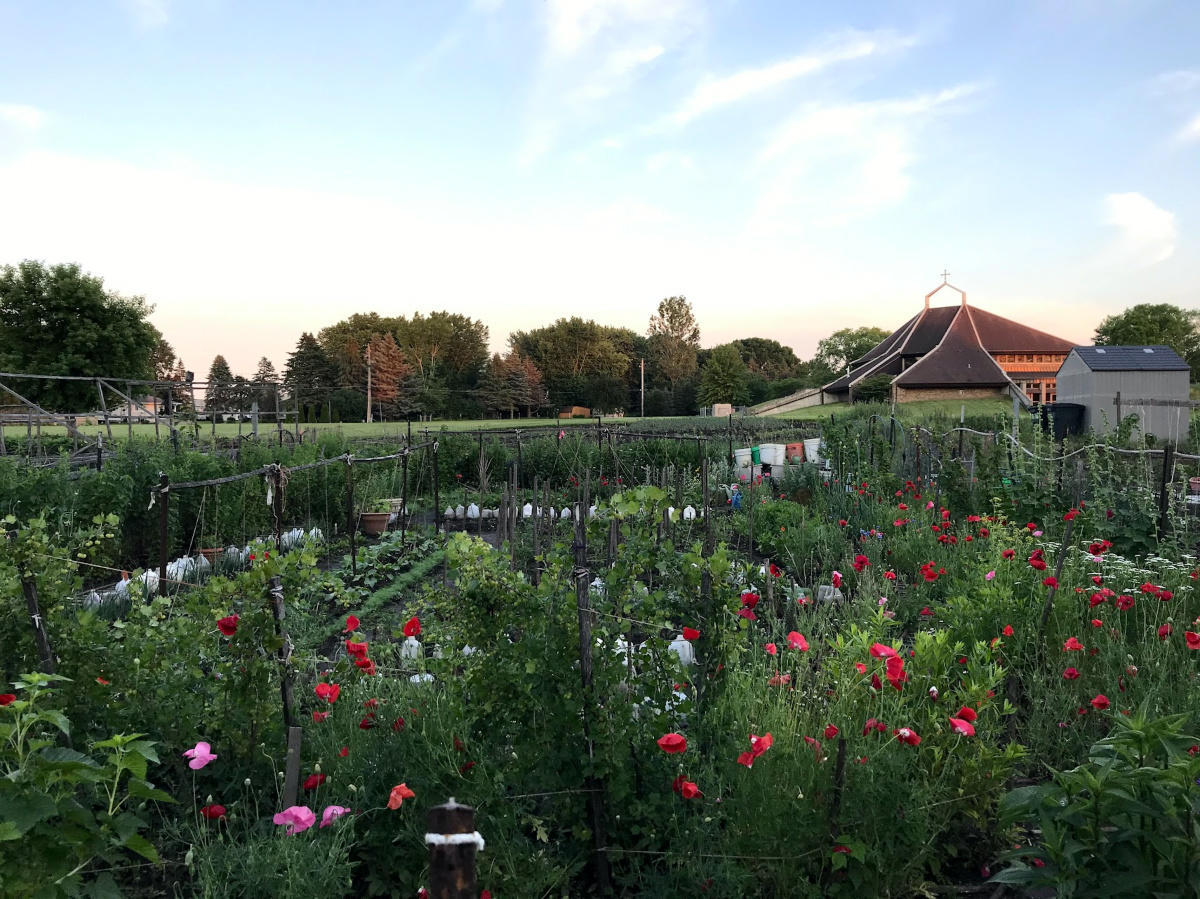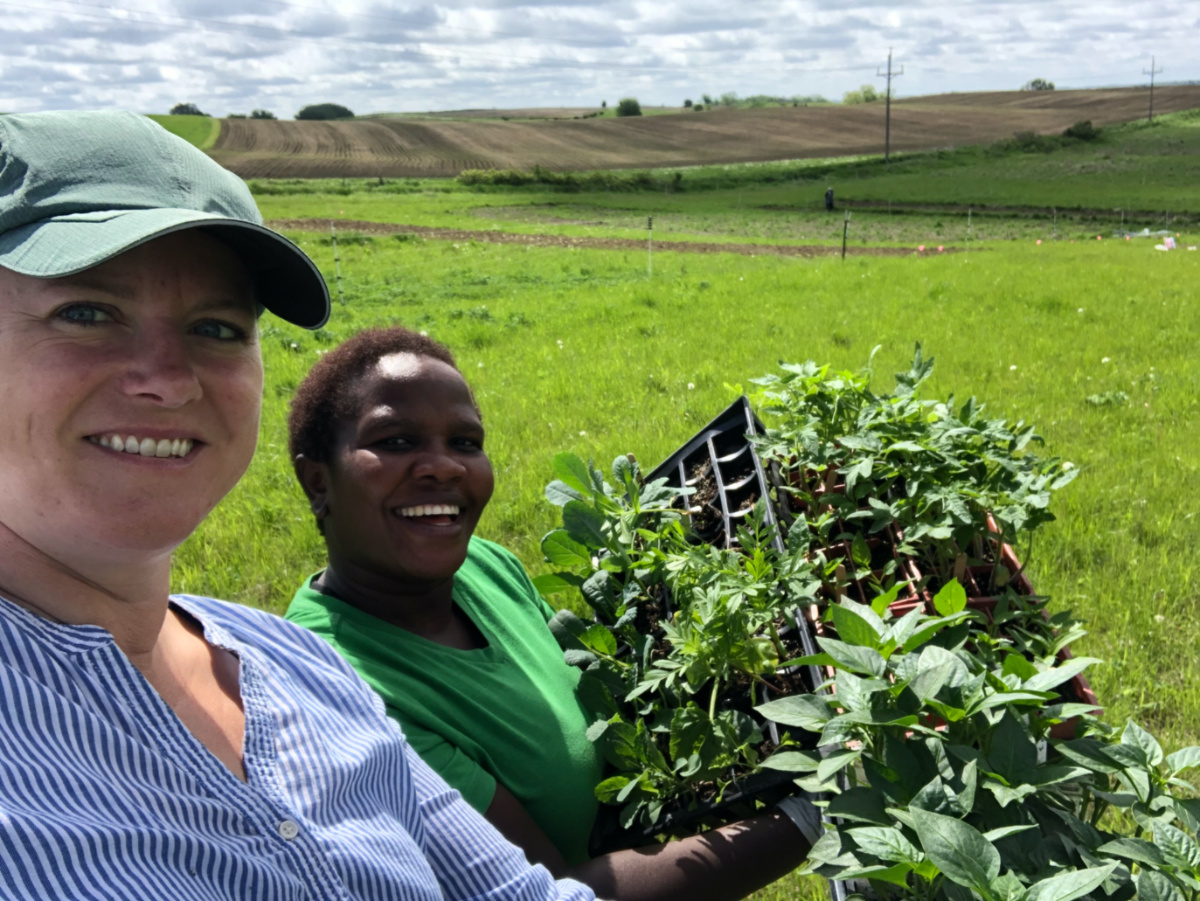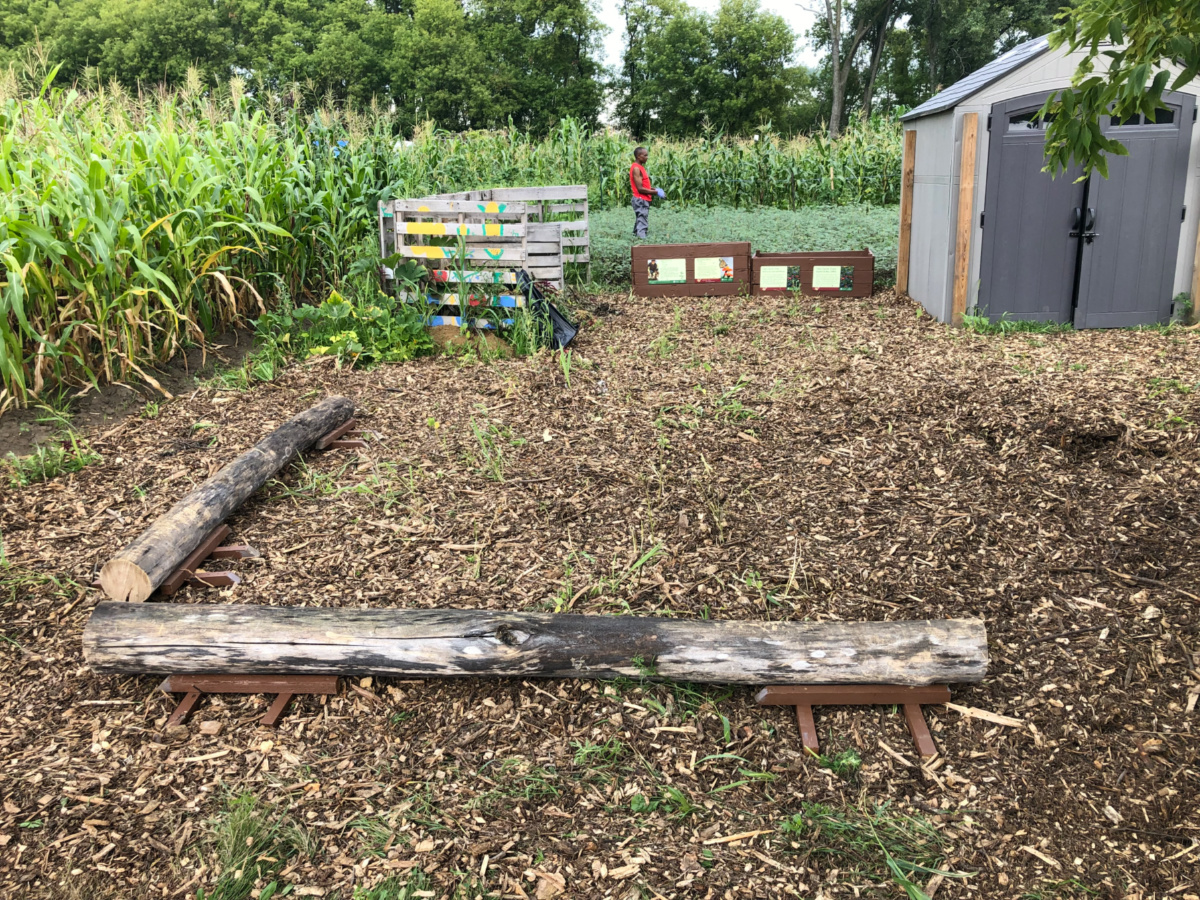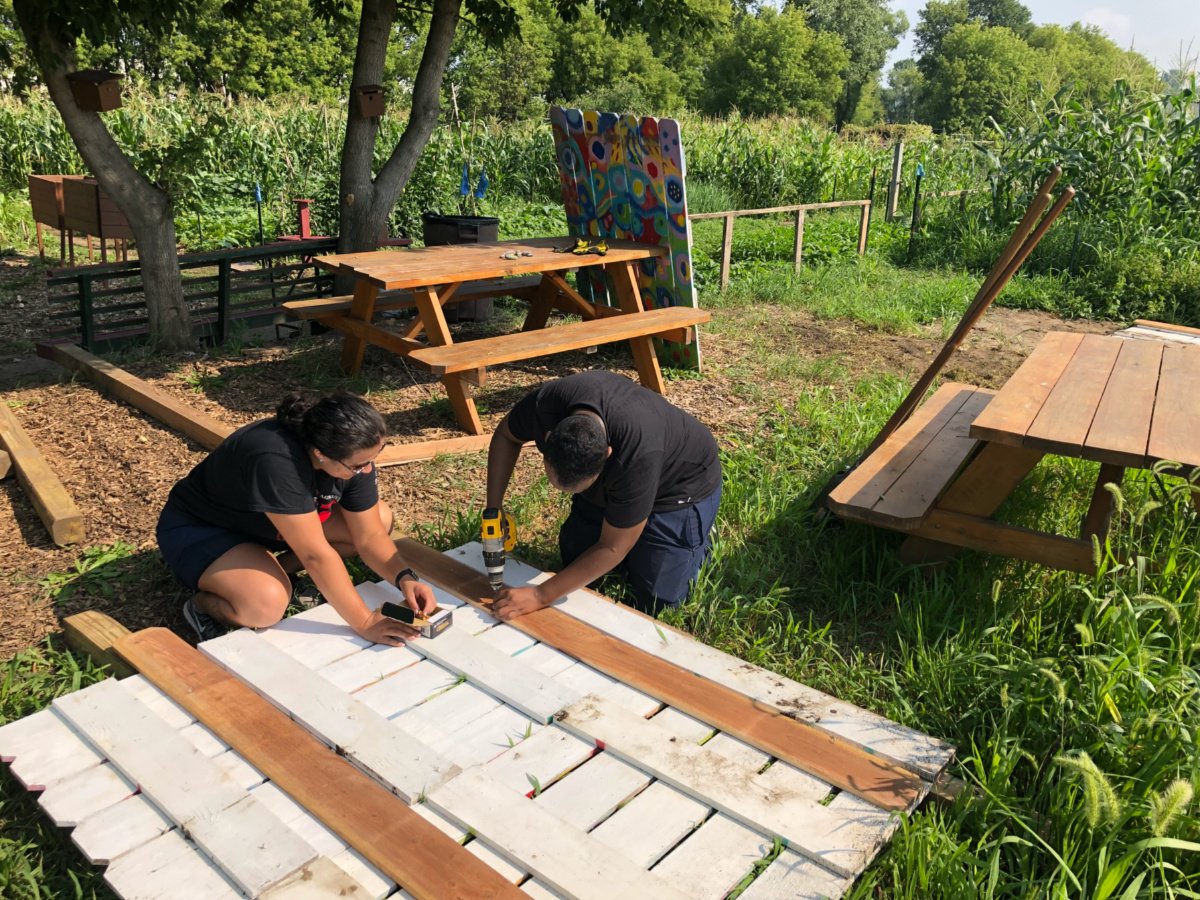
CAREY L BIRON, of Thomson Reuters Foundation reports on how church congregations have looked to boost food production…
Washington DC, US
Thomson Reuters Foundation
Benson Ongeri has been growing vegetables on a small plot on the grounds of a church in Rochester, Minnesota, for a half-dozen years, but he hadn’t seen such a sudden spike in interest from prospective new members until the COVID-19 pandemic hit.
The nursing student had first applied for a plot to grow vegetables from his native Kenya that he could not find in local markets, at a time when he and his family lived in an apartment with no access to land.
Even with Minnesota’s shorter growing season, Ongeri said a single six-by-nine-metre plot produces more than enough to feed his family through the year.
For growers, “these plots are really significant to us because we can produce as much vegetables as we need,” he told the Thomson Reuters Foundation.

Community garden plots bloom on church land in Rochester, Minnesota. PICTURE: Handout photo by Olivia Allen-Wickler.
With the pandemic and related economic upheavals having drastically worsened food insecurity across the United States, a growing number of people are seeing the potential for small-scale urban farming to feed families who can’t find or afford fresh fruits and vegetables.
Ongeri got his plot through a Rochester project called the Village Agricultural Cooperative, which is made up of more than 160 families farming about four hectares across the city, said project director Amanda Nigon-Crowley.
“[T]hese plots are really significant to us because we can produce as much vegetables as we need.”
– Benson Ongeri, who has been growing vegetables on a small plot on the grounds of a church in Rochester, Minnesota, for a half-dozen years.
Village projects are also on other church land, leased farmland and civic sites.
Many of the growers are from immigrant families who have been buffeted by the pandemic, she said, recalling one grower from Mexico whose family was struggling to cope with higher food prices and loss of work.
“Because she was able to grow so much of her own food, she doesn’t think she was impacted as much,” as the grower and her family might have been, Nigon-Crowley said.
She said surveys of the farmers involved in the project suggest the plots are producing enough to allow families to fill their freezers for the winter and even give food away.

Growers plant seedlings at a cooperative garden in Rochester, Minnesota. PICTURE: Handout photo by Amanda Nigon-Crowley.
Cathy Walker, president of the Georgia-based American Community Gardening Association, said more people all over the country are looking to grow their own amid the pandemic.
“We have seen a tremendous amount of community gardens popping up,” she said.
In part motivated by new interest sparked by the pandemic, the association, which includes over 2,000 projects in North America, has set a goal this year to help increase the number of gardens by 20 per cent.
“Since the pandemic there are more and more people interested in where their food comes from,” said Walker. “Because of the shortage of food, they realise the importance of growing their own fresh fruits and vegetables.”
Walker is also director of the community-driven Metro Atlanta Urban Farm in Georgia, which she said during the pandemic re-focused its mission on helping feed those in need.
The first year of the pandemic saw hunger affect an estimated 45 million people, according to the national non-profit Feeding America, which responded by expanding its food assistance by 44 per cent from the previous year.
Tracking from the US Census Bureau shows that by January this year, more than 22 million people still did not have enough food.
Feeding America and the US Department of Agriculture told the Thomson Reuters Foundation they have not tracked the role of small-scale agriculture in responding to pandemic-linked hunger.
But on the local level, some community farming advocates report seeing evidence of a major trend.
“The pandemic has intensified our momentum and generated tons of new interest in food, farming and food system issues,” said Rev Heber Brown III, a senior pastor in Baltimore and founder of the Black Church Food Security Network.

A community garden in Rochester, Minnesota. PICTURE: Handout photo by Amanda Nigon-Crowley.
The national network, created in 2015 after racial justice protests rocked Baltimore, now links about 70 faith institutions engaged in growing food – and Brown expects that number to expand to nearly 150 this year.
Brown’s own church produces about 544 kilograms of herbs and vegetables a year, he said, noting that the pandemic has worsened hunger problems in his congregation and beyond.
He said the network has been helping churches set up farming projects through technical and financial assistance but is now moving toward a more comprehensive strategy of planned growing and harvesting.
That would include buying directly from Black farmers and facilitating distribution of produce, he said.
“This has been a very busy two years for us. My phone is ringing off the hook from churches that want to start or expand gardens,” Brown said.
We rely on our readers to fund Sight's work - become a financial supporter today!
For more information, head to our Subscriber's page.
Last year, the 7,000-congregation African Methodist Episcopal Church announced it would partner with the network.
“To date we have churches that are part of the network, and we’re looking to expand that – not only churches growing, but also lifting up members who may be farmers or growing at home,” said Rev Carolyn C Cavaness, a pastor in Ardmore, Pennsylvania, who oversees the AME gardens and farms program.
“Seeing the breakdown of the system by way of the virus, there’s been such a higher focus on self-care and wellness,” as well as access to nutritional foods, she said.
Cavaness’ own church is entering its fifth growing season, producing about 1,000 pounds of food a year. In 2020, it also started helping members build their own gardens or raised beds, offering assistance and materials.
“And it just took off,” Cavaness said. “Now raised beds are our trademark.”

Volunteers work at a community garden in Rochester, Minnesota. PICTURE: Handout photo by Amanda Nigon-Crowley.
Another AME church, Kingdom Fellowship in Silver Spring, Maryland, during the pandemic went from having no regular food program to being a key county food distribution hub.
While the church didn’t have its own garden, it instead seized the chance to support Black farmers in the region.
As hunger spiked in the community in March, 2020, the church’s Rev Kendra Smith said one day they gave out 500 bags of donated food to residents.
What was originally planned as a one-time effort turned into weekly distributions in five locations, often attracting long lines of people in need, Smith said – serving up to 1,000 households per week with up to 41,000 pounds of food.
That led the church’s leadership to think more about food production, land access and the prospect of empowering small-scale farmers.
Smith and her colleagues started purchasing from farms in the region, thinking of the relationship as “adopting” farms that could grow the produce the new distribution required.
“We started producing fresh produce, collards, turnip greens, sweet potatoes, strawberries – purchased from Black farmers and going to Black and brown communities,” Smith said.
Kingdom Fellowship is continuing to expand its program, which includes investing in cold storage both for its new food distribution operation and to help smaller churches with food banks and related initiatives.
This new focus on local, small-scale farming came about due to the pandemic, but Smith said the church is not looking back. “We will continue this, definitely,” she said.






